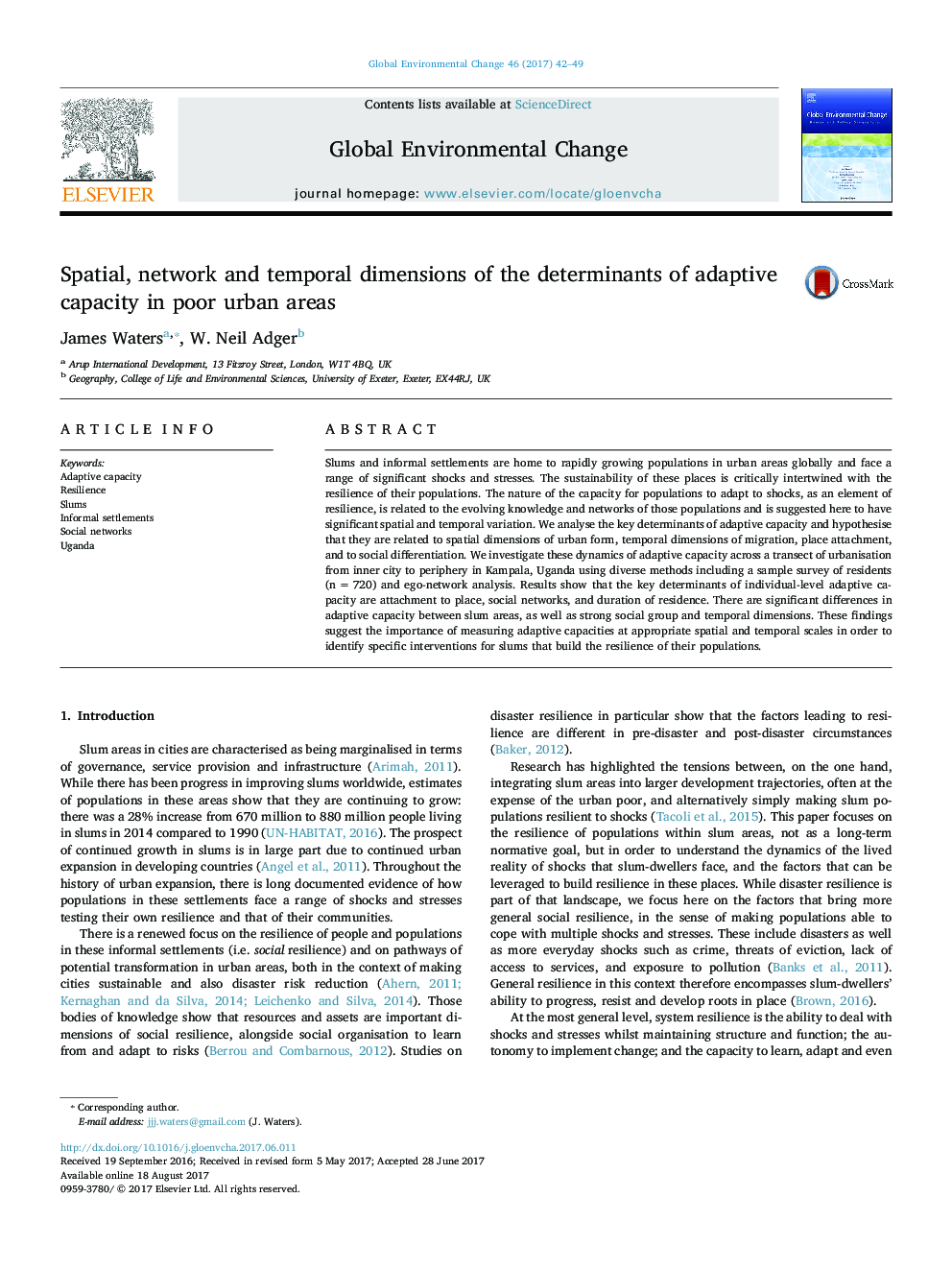| کد مقاله | کد نشریه | سال انتشار | مقاله انگلیسی | نسخه تمام متن |
|---|---|---|---|---|
| 5115882 | 1485112 | 2017 | 8 صفحه PDF | دانلود رایگان |
- Adaptive capacity is measured in three slums in Kampala, Uganda.
- Key determinants are attachment to place, social networks and duration of residence.
- Critically, adaptive capacity has dimensions of urban form, social group and time.
- Resilience building in slums should leverage less tangible local capacities.
- Urban resilience assessments should allow for differentiation of these dimensions.
Slums and informal settlements are home to rapidly growing populations in urban areas globally and face a range of significant shocks and stresses. The sustainability of these places is critically intertwined with the resilience of their populations. The nature of the capacity for populations to adapt to shocks, as an element of resilience, is related to the evolving knowledge and networks of those populations and is suggested here to have significant spatial and temporal variation. We analyse the key determinants of adaptive capacity and hypothesise that they are related to spatial dimensions of urban form, temporal dimensions of migration, place attachment, and to social differentiation. We investigate these dynamics of adaptive capacity across a transect of urbanisation from inner city to periphery in Kampala, Uganda using diverse methods including a sample survey of residents (n = 720) and ego-network analysis. Results show that the key determinants of individual-level adaptive capacity are attachment to place, social networks, and duration of residence. There are significant differences in adaptive capacity between slum areas, as well as strong social group and temporal dimensions. These findings suggest the importance of measuring adaptive capacities at appropriate spatial and temporal scales in order to identify specific interventions for slums that build the resilience of their populations.
Journal: Global Environmental Change - Volume 46, September 2017, Pages 42-49
